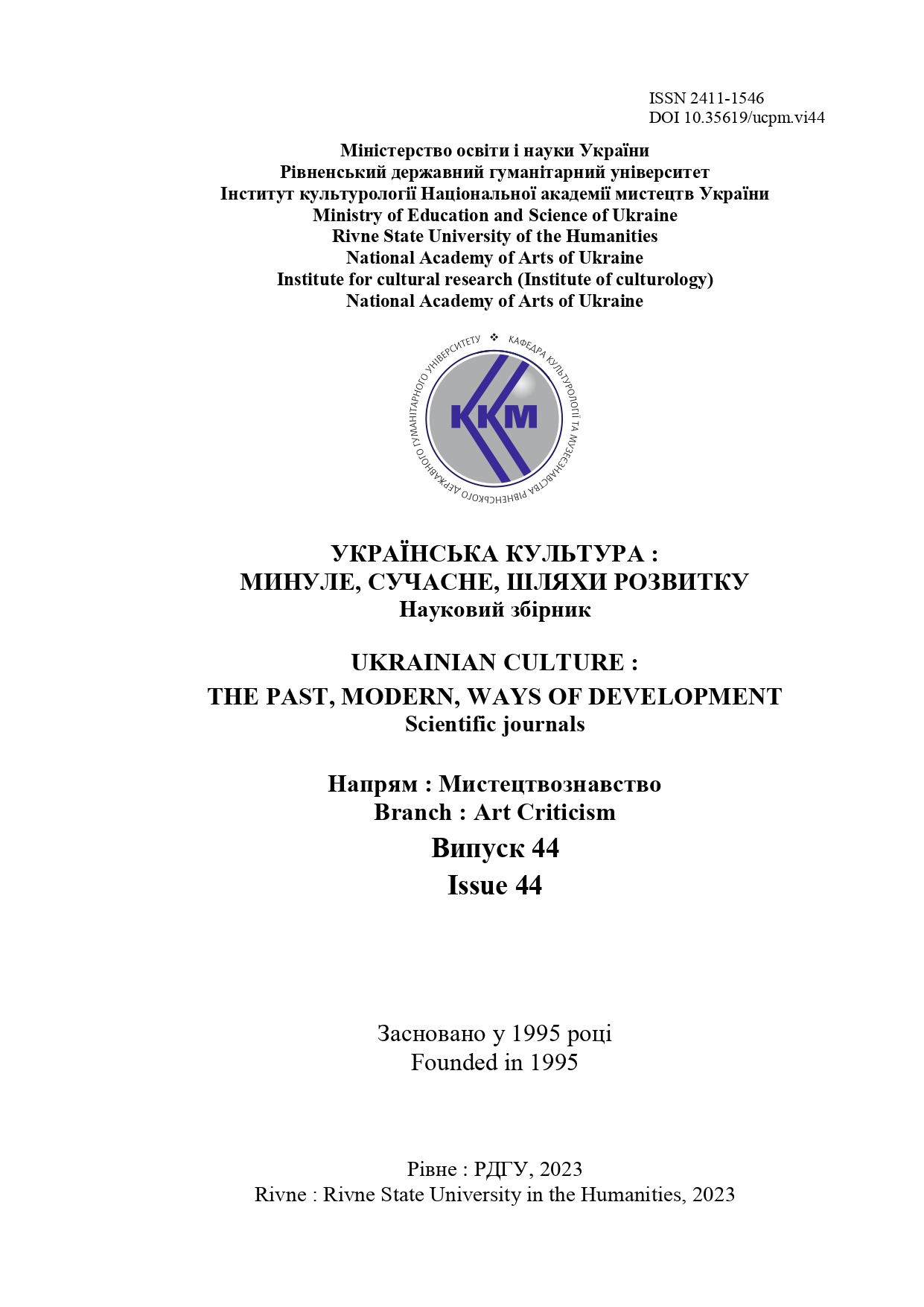THE IMAGE OF THE LEGENDARY MULAN IN LIU HANLI'S COMPOSITION «MULAN SI» FOR YANGQIN'S SOLO AND THE ENSEMBLE OF FOLK INSTRUMENTS
Abstract
The purpose of the work is to investigate the stylistic direction of the features of the musical language of Liu Hanli‘s creation, using the example of the composition «Mulan Si» for Yanqing‘s solo and the ensemble of folk instruments and, therefore, to reveal the synthesis of Western European features and the elements of national folklore.
The methodological basis of the work is determined by the structure and artistic specificity of the object and includes: musical and stylistic approach and comprehensive musicological and structural analysis of the musical material itself.
The scientific novelty of the work is determined by the fact that for the first time it investigates the signs of the composer's musical language in the composition «Mulan Si» for Yangqing's solo and the ensemble of folk instruments in order to prove that Liu Hanli reproduced the legendary image of Mulan and her exploits in music, applying the transformation of Chinese folklore and romantic means of expression. For the first time, a complex of expressive means, architectonics, and therefore dramaturgy and program design were analyzed in detail.
Conclusions. The literary program is reflected in the music. The episodes of the work retain the principle of contrast, which indicates the variability of events and reflects the inner experiences of the main character of the poem.
The literary plot is arranged in the following sequence of parts: Introduction, Adagio «A», Cadence (hua caihuangkai), Allegro «B», Largo «C», Epilogue, among which the central, most important ones outline a complex three-part form with Introduction and Epilogue. The program is implemented quite abstractly, which is typical for Chinese music.
Regarding the means of musical expression in creating images and portraying events, the most significant ones are highlighted. In the modal-tonal sphere, the dominant role is played by the pentatonic, segments of the mode of different inclinations, , due to which oriental flavor is manifested in the music.
Pentatonic occurs both horizontally, giving the melody a narrative character, and is used as a verticalization of the mode, which has a direct impact on the color and functionality of the harmony. Some fragments of the work are characterized by bifunctionality and multi-layeredness.
The compositional structure of separate parts is influenced by the national models of shaping, namely, the variant development of thematics and the Eastern tradition of improvisation. In the palette of the speech means of expression, the composer Liu Hanli combined the modal-harmonic, metro-rhythmic and timbre features of Chinese and European music.
The prospects for further research of the problem lie in the field of studying the features of the musical language of Chinese composers in the works of various genres for Yangjin.


